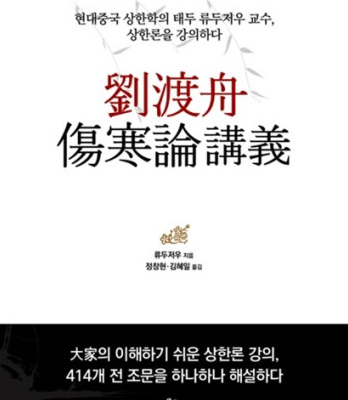Your Seasonal Wellness Transition: 3 Reasons It’s Still Hot & How to Prepare
The calendar flips to late August or early September, and technically, autumn has begun. But you step outside, and the air is thick, humid, and relentlessly hot. It feels more like the peak of summer than the start of a new season. If you’ve ever felt this jarring disconnect between the date and the weather, you’re not alone.
Interestingly, traditional East Asian wisdom has a specific name for this exact transitional period. It marks the official start of autumn on the solar calendar, and it comes with a deep understanding of why we don’t feel immediate relief from the heat.
This guide will unlock the secrets behind this phenomenon using the wisdom of this seasonal marker. We’ll explore why the heat lingers and, more importantly, share two simple yet powerful wellness tips inspired by this knowledge to help you transition your health smoothly from summer to fall.
A Deeper Look at Seasons: The 24 Solar Terms
Before we dive into the specifics, it’s helpful to understand the system this concept comes from. The 24 Solar Terms are a traditional way of marking the seasons based not on the weather we feel, but on the Sun’s precise position in the sky.
As the Earth orbits the Sun, the Sun appears to move along a path called the ecliptic. Ancient astronomers divided this path into 24 equal sections. Each time the Sun crosses into a new section, a new “solar term” begins. This system is brilliant because it’s based on the primary driver of all seasonal change: the Sun itself. All climate shifts and seasons exist because of the Sun’s powerful influence.
Understanding this hot “pre-autumn” period means looking at the cause (the Sun’s energy) rather than just the effect (the daily temperature).
The 24 solar terms are based on the Sun’s position, offering a unique perspective on seasonal energy.
The Big Question: Why Is Early Autumn So Hot?
This solar term marks the point when the sun’s position begins its journey from the Summer Solstice (the longest day) toward the Autumnal Equinox (when day and night are equal). So, if the sun’s power is technically starting to wane, why are we still sweating? Here are three powerful reasons.
1. The Planet’s “Thermal Lag”
Think of the Earth like a cast-iron skillet. Even after you turn off the burner, the skillet stays scorching hot for a long time. It has to slowly release all the heat it has absorbed.
The Earth works the same way. The peak summer months are when the Sun pours its maximum energy into the land and sea. By the time the calendar hints at autumn, the planet is fully “charged” with this solar energy.
So, this period doesn’t mean the cooling has started; it means the heating process has peaked, and the slow, gradual process of cooling is about to begin. The heat we feel is the stored energy from weeks past.
2. The Peak of Accumulated Energy (Qi)
From a traditional wellness perspective, temperature isn’t just a number; it’s a reflection of energy, or Qi (pronounced “chee”). Heat is seen as the manifestation of condensed energy.
Throughout the summer, the Sun’s expansive, vibrant Qi has been pouring into the Earth, accumulating day after day. This early autumn marker signifies the moment this accumulation reaches its absolute peak. All that summer energy is now densely packed into the environment, which is why these days are often some of the hottest of the year.

3. A Shift in Direction, Not Immediate Results
This is perhaps the most crucial point. While daylight hours have been getting shorter since the Summer Solstice, this moment marks a decisive change in the direction of nature’s energy.
Think about it like this: if you decide to study hard for a test, your grades don’t improve the very next day. You’ve changed your direction and effort, but the results take time to show.
The start of the solar autumn is the same. The universe has flipped a switch. The Sun’s energy is no longer expanding outward but is beginning its long, slow journey of converging inward, paving the way for the coolness of true autumn. The effect isn’t immediate, but the underlying trend has fundamentally shifted. It’s a promise of the cool days to come.
Seasonal Wellness: A Tip from 8 Constitution Medicine
The calendar flips to late August or early September, and technically, autumn has begun. But you step outside, and the air is thick, humid, and relentlessly hot. It feels more like the peak of summer than the start of a new season. If you’ve ever felt this jarring disconnect between the date and the weather, a successful seasonal wellness transition can feel out of reach.
Interestingly, traditional East Asian wisdom has a specific name for this exact period. This knowledge provides a fascinating roadmap for why we don’t feel immediate relief from the heat.
This guide will unlock the secrets behind this phenomenon. We’ll explore why the heat lingers and, more importantly, share two simple yet powerful tips to help you make a smooth seasonal wellness transition and prepare your body for the cooler months ahead.
A Deeper Look at Seasons: The 24 Solar Terms
Before we dive into the specifics, it’s helpful to understand the system this concept comes from. The 24 Solar Terms are a traditional way of marking the seasons based not on the weather we feel, but on the Sun’s precise position in the sky.
As the Earth orbits the Sun, the Sun appears to move along a path called the ecliptic. Ancient astronomers divided this path into 24 equal sections. Each time the Sun crosses into a new section, a new “solar term” begins. This system is brilliant because it’s based on the primary driver of all seasonal change: the Sun itself. This ancient calendar provides a unique framework for a better seasonal wellness transition.
The 24 solar terms are based on the Sun’s position, offering a unique perspective on seasonal energy.
Why Your Seasonal Wellness Transition Feels So Hot
This solar term marks the point when the sun’s position begins its journey from the Summer Solstice (the longest day) toward the Autumnal Equinox. So, if the sun’s power is technically waning, why are we still sweating? Understanding these reasons is the first step to mastering your seasonal wellness transition.
1. The Planet’s “Thermal Lag”
Think of the Earth like a cast-iron skillet. Even after you turn off the burner, the skillet stays scorching hot for a long time. It has to slowly release all the heat it has absorbed.
The Earth works the same way. The peak summer months are when the Sun pours its maximum energy into the land and sea. By the time the calendar hints at autumn, the planet is fully “charged” with this solar energy. This makes the seasonal wellness transition challenging, as the environment is still radiating peak summer heat.
2. The Peak of Accumulated Energy (Qi)
From a traditional wellness perspective, temperature isn’t just a number; it’s a reflection of energy, or Qi (pronounced “chee”). Heat is seen as the manifestation of condensed energy.
Throughout the summer, the Sun’s expansive, vibrant Qi has been pouring into the Earth. This early autumn marker signifies the moment this accumulation reaches its absolute peak. This intense concentration of environmental energy is what we must navigate during this critical time.
3. A Shift in Direction, Not Immediate Results
This is perhaps the most crucial point. While daylight hours have been getting shorter, this moment marks a decisive change in the direction of nature’s energy.
Think about it like this: if you decide to study hard, your grades don’t improve the next day. You’ve changed your direction, but the results take time. The universe has flipped a switch, and recognizing this subtle shift is a core principle of an effective seasonal wellness transition. The effect isn’t immediate, but the underlying trend has changed.
A Tip from 8 Constitution Medicine for This Transition
A fascinating perspective on this seasonal wellness transition comes from a specialized field known as 8 Constitution Medicine. This system of Korean medicine identifies eight unique body types, each with specific health needs.
Among these are the Wood Yang constitution and the Wood Yin constitution. Their health is at its best when their powerful life energy (Qi) can freely disperse outwards. The challenge is that autumn begins a “converging” season where energy pulls inward—the opposite of what they need. Failing to adapt now can lead to problems later.
Your Action Plan: 2 Simple Tips for a Smooth Transition
Proactive steps are essential for a successful seasonal wellness transition, regardless of your constitution. Here are two critical actions to take.
Tip 1: Reduce Your Intake of Cold Foods and Drinks
That ice-cold water might feel refreshing, but it introduces a “cold and contracting” energy into your body. This reinforces the converging energy of the season, making it harder for your body to adapt. Start swapping icy drinks for room-temperature or warm ones to support your inner balance.
Tip 2: Use Air Conditioning Mindfully
Blasting the AC creates an artificial winter that shocks your system. Your skin’s pores, open to release heat, close suddenly, trapping heat and moisture inside. Use the AC moderately and carry a light jacket to protect yourself from direct, cold drafts.
These small acts are a form of preventative wellness. By respecting this subtle energetic shift, you help your body stay in balance, ensuring a successful seasonal wellness transition and strengthening your defenses for the cooler months ahead.
For the original Korean text, visit here.
If you’re curious about the basics of traditional Korean medicine and health, read the following article:
The Truth About 8 Constitution Medicine: A Revolutionary Healing Framework Explained
Learn Why Studying JangSang Medicine is Important.
Frequently Asked but Silly Questions (Foods Good for the Liver??)

